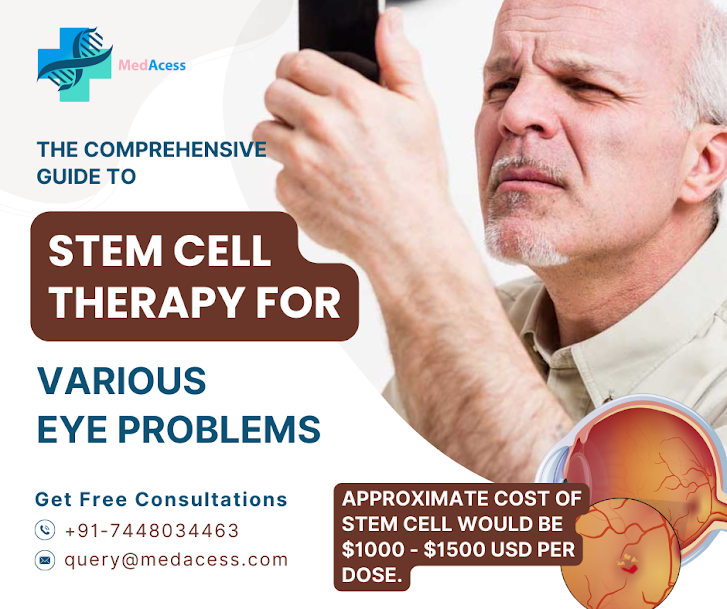Amyotrophic Lateral Sclerosis (ALS) is a progressive neurodegenerative disease that affects the nerve cells in the brain and spinal cord. ALS leads to muscle weakness and atrophy, and eventually, patients lose the ability to control their muscles, speak, eat, and breathe. Unfortunately, there is no known cure for ALS, and the available treatments only slow down the progression of the disease. However, stem cell therapy has shown promising results in treating ALS, and India has emerged as a leading destination for stem cell treatment. In this article, we will explore stem cell treatment for ALS in India.
What is stem cell therapy?
Stem cell therapy is a regenerative medicine approach that uses stem cells to repair or replace damaged cells, tissues, and organs in the body. Stem cells have the ability to differentiate into various types of cells, such as nerve cells, muscle cells, and blood cells. Stem cells can be derived from various sources, such as bone marrow, umbilical cord blood, and adipose tissue.
How does stem cell therapy work for ALS?
In ALS, the motor neurons that control the muscles degenerate and die, leading to muscle weakness and atrophy. Stem cell therapy aims to replace these damaged motor neurons with healthy ones. The stem cells can differentiate into motor neurons and integrate into the damaged areas of the spinal cord and brain. The new motor neurons can then re-establish connections with the muscles and restore their function.
Types of stem cells used for ALS treatment
There are different types of stem cells used for ALS treatment, such as:
Mesenchymal stem cells (MSCs): MSCs are derived from various sources, such as bone marrow, adipose tissue, and umbilical cord tissue. MSCs have the ability to differentiate into various types of cells, including nerve cells. MSCs also have immunomodulatory properties that can reduce inflammation and promote tissue repair.
Neural stem cells (NSCs): NSCs are derived from the brain or spinal cord tissue. NSCs can differentiate into various types of nerve cells, including motor neurons. NSCs also have the ability to migrate to the damaged areas of the brain and spinal cord and integrate into the existing neural network.
Induced pluripotent stem cells (iPSCs): iPSCs are generated from adult cells, such as skin cells or blood cells, through a process called reprogramming. iPSCs can differentiate into various types of cells, including nerve cells. iPSCs have the advantage of being patient-specific, which reduces the risk of immune rejection.
Stem cell treatment procedure for ALS in India
Stem cell treatment for ALS in India typically involves the following steps:
Pre-treatment evaluation: The patient undergoes a thorough evaluation to determine their eligibility for stem cell treatment. The evaluation includes a medical history review, physical examination, and diagnostic tests.
Stem cell collection: The stem cells are collected from the patient's own body or a donor's body, depending on the type of stem cells used.
Stem cell processing: The collected stem cells are processed in a laboratory to enrich and purify them.
Stem cell transplantation: The processed stem cells are transplanted into the patient's body through various routes, such as intravenous infusion, intrathecal injection, or direct injection into the affected muscles.
Post-treatment follow-up: The patient undergoes regular follow-up evaluations to monitor their progress and adjust the treatment plan if necessary.
Benefits of stem cell treatment for ALS
Stem cell treatment for ALS offers the following benefits:
Regeneration of damaged nerve cells: Stem cells have the ability to differentiate into various types of nerve cells, including motor neurons. When transplanted into the damaged areas of the brain and spinal cord, stem cells can replace the damaged motor neurons and regenerate new ones.
Improvement in muscle strength and function: As new motor neurons are regenerated, they can re-establish connections with the muscles and restore their function. This can lead to improvement in muscle strength and function, allowing patients to regain some of their lost abilities.
Slowing down the progression of the disease: While there is no known cure for ALS, stem cell therapy has been shown to slow down the progression of the disease. This can help patients maintain their quality of life for a longer period of time.
Reduction in inflammation: Stem cells have immunomodulatory properties that can reduce inflammation in the brain and spinal cord. This can help protect the remaining motor neurons and slow down the progression of the disease.
Improvement in quality of life: Stem cell therapy can improve the quality of life for ALS patients by reducing symptoms, such as muscle weakness and atrophy, and restoring some of their lost abilities. This can improve their overall well-being and allow them to enjoy life to the fullest.
More Info On: How Much Does Stem Cell Treatment Cost for Uzbekistan Patient?








